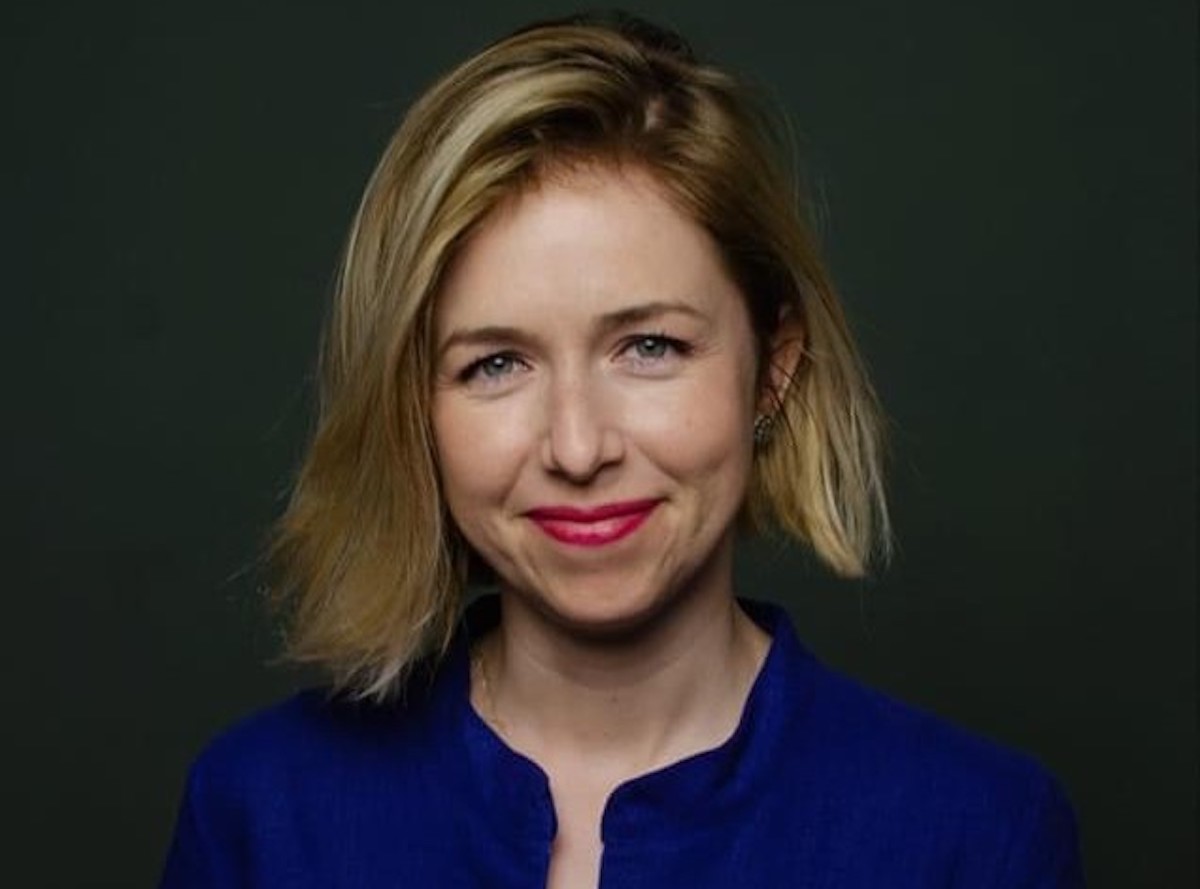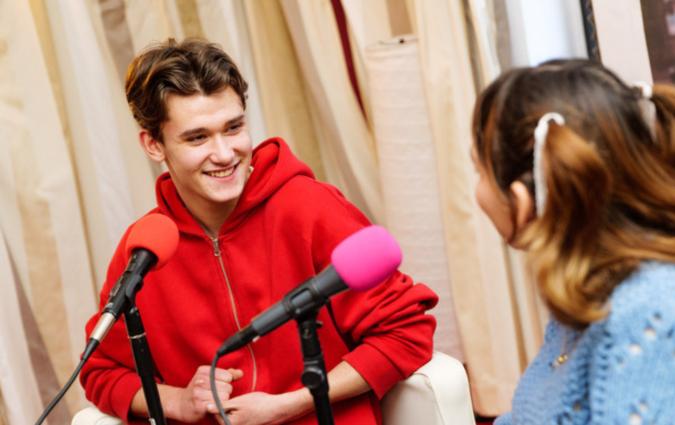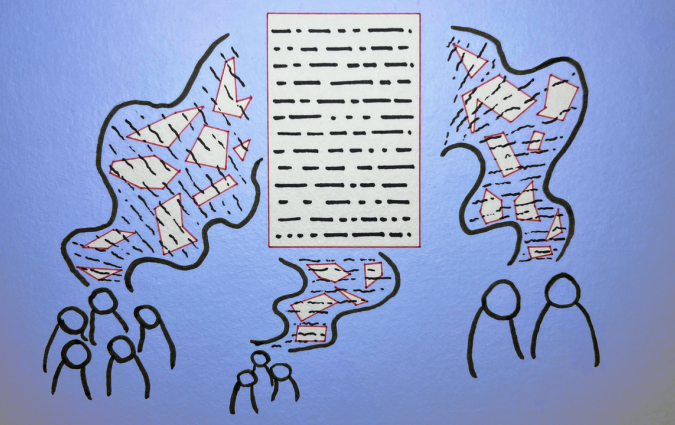How this Romanian news brand is reaching young audiences on Instagram and TikTok

Diana Filimon.
This interview was first published by Italian journalist Francesco Zaffarano in his biweekly Substack newsletter, Mapping journalism on social platforms. The original is available at this link. Sign up for the newsletter here.
Gen, știri, a social media-based news brand for Gen Z entirely produced by Gen Z, is one of the most prominent Romanian news publications on Instagram with 52,000 followers, as well as 29,000 on TikTok.
I spoke with Diana Filimon, a civic activist and the co-founder of Gen, știri, about how the outlet works, how it connects with its audience and how it measures success.
Q. How did Gen, știri start?
A. Almost seven years ago, I started a civic NGO in Romania called Forum Apulum. The focus of the NGO is to help young Romanians become more civically engaged and more active in their community. We work on different projects, from using art for civic engagement to promoting election participation.
Three years ago, we came up with the idea of making a magazine for a young audience, produced by a team of young people already involved in other projects we were running. We gathered 15 kids, coordinated by journalists, artists, and writers. We called the magazine Gen, revistă.
We made three issues in print, and then we started running some writing workshops, during which we realized there was a huge gap in how young Romanians read the news. Every time we asked, “Where do you get the news?” there was an awkward silence, and if we pushed them, the answer was from Instagram and Tiktok.
They were barely able to name a few Romanian media outlets. They had no idea. The mainstream media was like a parallel universe for them. They associated mainstream media with the world of adults and didn't feel included in that conversation. So my co-founder Teodor Tiță and I said, okay, let's try to do something about that, and we started an Instagram account one year and a half ago called Gen, știri – where “știri” in Romanian means news.
We decided to use the account as a new branch, but for news, and so we started posting every day. The project started to grow more and more quickly with the beginning of the Russian invasion of Ukraine.
Q. What is your role in Gen, știri?
A. Teodor Tiță and I coordinate the whole project – he has a background of 20 years in journalism and managed some of Romania's biggest newsrooms. He is the journalistic part of the brain, while I am the activist part of the brain.
The rest of the team is all under 24 years old. Most of them joined through previous projects of the NGO, while some of them were recruited online.
Q. How is the team structured? How did you choose the right people?
A. 80% of the team grew up with us in other projects we had and they organically found their place in the team.
When we started, we had five reporters. Two of them had some experience in journalism, and three were in journalism school in Bucharest.
The real problem was not finding people but making them unlearn how to write so that we could find our way of writing for this specific project. So it’s easier when we bring in a new team member with no journalism experience.
Q. Are they volunteers or paid journalists? How is the project working financially?
A. They were volunteers for the first six months, and as soon as we had proof that the project was working, we started applying for grants to pay the journalists with part-time contracts.
We didn’t ask for public money because we wanted to be independent and free to criticize the government.
We are also becoming commercially interesting, so we started some paid collaborations. The project is slowly becoming sustainable, not just from a granting point of view but also from a commercial point of view.
Donations and subscriptions, instead, don’t work for us because our public is 60% under 24 years old and 80% under 30 – they're pretty much without any money or at the beginning of their careers.
Q. What kind of content do you publish?
A. As of today, we publish approximately five or six pieces of news per day on Instagram and TikTok. We publish stories from Romania and the rest of the world, and we have a mix of news and explainers. When the war in Ukraine started, for example, we started to hear a lot of talk about NATO, so we published an explainer to address what it is. We do the same when there is a lot of talk in the news about institutions in Romania or to profile people who are in the news for some reason.
We also have original news content. A few weeks ago, for example, the team went out to cover four protests that were taking place at the same time in Bucharest and other cities in Romania.
The project is growing faster than we expected, and the rhythm is imposed by the needs of our readers, who are constantly asking us what's happening, especially in Ukraine.
And it's more than just posting news – we have stories that generate a lot of comments and spark debates because the members of our community feel safe enough to share their views.
And if they see something wrong, if they witness abuse, they come to us and ask us to investigate.
This project is a weird animal, one I don't have a term to describe. It's a mixture of explaining the news, covering news, and community activism.
Q. What is your main platform?
A. It’s been Instagram from the beginning because we had a better understanding of the platform from previous projects. But we were already keeping an eye on TikTok, and we knew that was the place where we needed to go eventually.
At first, TikTok was very complicated. We had to do a lot of trial and error. We decided to split the team into Instagram and TikTok teams because we felt like we needed two different brains in the newsroom to be wired to the different algorithms and ways of communication.
Instagram is still the main platform, but TikTok is growing as well. When we did a one-hour live stream during the weekend to cover the protests and we had over 1,000 people constantly watching. And that’s a lot if you think we had 25,000 followers on TikTok then. And the most interesting thing was that the viewers constantly commented on what we were saying.
Q. What formats perform best for you?
A. The truth is that we don’t know – we had good and bad performances on all kinds of content, with or without a face, with or without a creator style. I think the subject is the lead in the end – if we put our finger on an interesting subject for our audience, it doesn't matter how it's done. Of course, both length and quality matter, but the format is not as relevant as the subject.
We have news stories presented using carousels on Instagram, videos from big events, explainers, and vox populi on the street with young people when something big happens.
For example, recently there was this news story that the level of trust towards the European Union in Romania decreased greatly in a month because we were not admitted to the Schengen area. So we went out and asked the kids how they felt about it. It’s a way to take the temperature of a subject and continue the discussion on big stories, but also to ask questions of our audience to understand it better.
Q. How do you measure success?
A. Besides the numbers, which we analyse every week, for me, the most important measures of success are the messages that people send us.
For example, a few weeks ago, we started a paid partnership with Samsung, and our audience began sending us messages from which we understood they were uncomfortable with this new thing. So we decided to explain to our audience why we did this paid partnership. We explained how we work, the fact that we started as volunteers but that you can’t do volunteering forever, and how we are trying to fund our work to survive.
We received tens of comments, public and private, thanking us for the explanation and saying they trust us because we are transparent and do not hide this partnership.
For me, this is a measure of success. Our readers care, and this project is very important to them.
Q. And how do you explain this success?
A. There are two main reasons. First is that all the people on the team except two are not from Bucharest. They are from all over the country, which means we, as a newsroom, have a better and more grounded understanding of Romania.
The second element is that, from the beginning of this project, we had a persona in mind: we are talking to a 17-year-old from a not-so-cool and not-so-big town in Romania who is going to the not-the-best high school in town. This person doesn’t know if they will go to university. We don't talk to young people who already know things and read the newspapers.
I would say that more than 75% of our audience is not media-literate. A relevant percentage of them will just get the news from us, but some might be curious enough to check out our news sources, which we always share.
The secret is not selling them bulls – and talking to them like you’d want someone else to talk to you.
Q. Where do you sit in the political spectrum?
A. We try our best to be impartial, even if we have our own beliefs and our own political opinions. We are very obsessed with being impartial, and we are proud to have readers from the far left to the far right of the political spectrum.
For me, this is a crucial point because everything feels so polarized. Sometimes, we have to swallow our words just to make sure that we stay impartial.
Next year, we will have four rounds of elections in Romania, and we expect many readers to come to us to understand politics better. So, it’s fundamental that they can trust us and that they don’t see us as left or right-wing media.
Q. Where do you see the project going in the next three years?
A. We should move to an app of our own – I feel very uncomfortable being so dependent on these platforms, which can be very moody, as we see with Twitter now. I don’t know if a proprietary app is a medium or long-term project, but it’s where I would like us to go.
Q. Can you name three good journalism accounts you like for the work they do on social platforms and say why?
A. Berlin Fresh (DW on TikTok), because I got the chance to be mentored by Johanna Rüdiger and I know a little about her amazing work on the project. I love how the team allow themselves to play and stay cool.
The Washington Post on TikTok was my go-to place during the pandemic, they are doing a great job, congrats to them.
And The Economist on Instagram and TikTok, because they are nailing it everywhere.
Italian journalist Francesco Zaffarano has recently launched a biweekly Substack newsletter, Mapping journalism on social platforms, featuring interviews with people leading news innovation on social media. We lightly edited this interview for brevity and clarity. The original is available at this link. Sign up for the newsletter here.






